Farm Insurance Policy Types, Covers, Why do you Need It
- Farming is a risky business and farm insurance is an imporant aspect of your business. There are so many aspects of this job that could go horribly wrong, and it is always from unexpected quarters you have no control over; fire, drought, floods, hail, blight, accidents just to name a few.
- When times are tough, the first thing people think of is minimizing their expenditure and usually this is when people try and cut down on their insurance premiums. However, we all know that fires and hailstorms don't stop occuring just because times are economically tough.
- Farming is a dangerous job, especially when tractors or other machinery is involved. Farm accidents happen more times than we would like, and if you are the sole provider for your family you want to know that in the event of an accident, or an unexpectant health issue you will be covered by some form of insurance that will pay out while you are unable to work the farm.
- And finally in farming, you just can't seem to win. When the weather is good to you, crops are bountiful but prices are low because there is a glut on the market front. When the weather is bad, and your crops are poor, prices are now high. It's the old keystone to economics; supply and demand.
- So if you are a farmer, you need farm insurance to protect you against these risks, but many people buy insurance without really understanding the contents of the policies they have bought. So when they want to make a claim, suddenly they are either under insured or not insured for a particular item that they are claiming against.
- If you are beginning to think that insurance is a minefield through which you need to tread gently, you would be right.
Risk Management in Farming
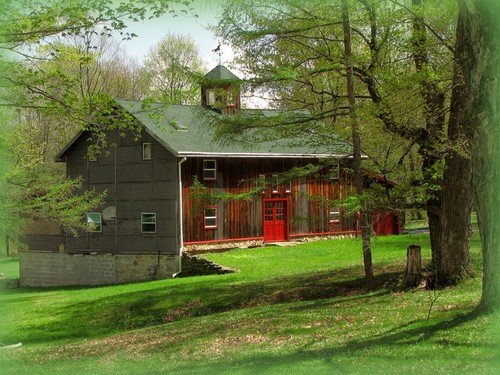
The successful farmer is able to manage the many risks inherent in the farming business with the minimal of cost. Good risk management guarantees a level of success where one plans to fail, rather than being one who fails to plan.
Farming risks should be seen as holistic rather as individual risks as often one impacts on the other and they are often inter-related. In addition, one should also be prepared for the most improbable risks, because when you least expect a disaster it suddenly appears! You can guarantee that!
So let us look at the risks that affect a farmer and what he should be mitigating for:
Production Risk in Farming:
Production risk is the overall uncertainty regarding production. A number of aspects can affect productivity:- crop performance
- inclement weather
- pests and disease
- machine efficiency
With climate change on
the advance, hotter temperatures, more drought and a drop in water
table levels, production risk is the main concern for any crop farmer.
Taking out farm insurance to cover you for this would be prudent.
Price Risk in Farming:
Price risk affects
farmers both in buying and selling due to the uncertainty and
competitiveness of pricing. Although very little risk management can be
done about "input" or buying seed, feed etc. Risk management
for "output" or price risk management when selling crops and livestock
can be achieved through an appropriate farm insurance policy.
Political Risk in Farming:
These days you will find
few countries around the world that are not in some form of political
turmoil. When there is political instability within a country famers
are always at risk. This could be where their personal safety is at
stake, or that of their crops and/or livestock. If there is a change of
government, there could be talks of land reform where farms could be
lost or the loss of certain government subsidies that used to exist
under a former government but not any more.
Funding and Funding Liquidity Risk:
Life is cyclical and in
farming we have cash flow cycles too. There are boom years, and there
are lean years. Manging the funding risk of a farming business is
crucial. We need to make sure that money has been saved and readily
available for the times when you need it most in order to continue to
operate your farming business during those lean times.
Currency Risk:
If you are exporting
your product you need to manage the currency risk of fluctuation.
Currency risk can severely impact on prices especially where prices of
inputs and outputs are referenced against a foreign currency.
Legal Risk:
When you are a farmer
there are always legal risks involved, especially when you have entered
into contractual agreements. Furthermore, there are also legal risks
where food safety is an issue.
Personal Risk:
Personal risks involve
those people who are involved with the management of the farm. These
risks involve farm safety, illness or death.
Managing Risk with Farm Insurance
As you can see farmers have so many risks to consider, that a lot of the time it all becomes a little overwhelming. In addition, if you were to take out farm insurance to mitigate all of the possible risks you would be paying so much money in premiums that very little would be left over to actually do any farming!So one has to be sensible about what insurances you need to take out. And this will depend on the following:
- How much risk are you willing to take?
- Which risks do you absolutely need protection from for the well-being, and survival of the farming business?
- How much money is available for farm insurance?
- What would be the consequences for not seeking protection from these risks?
Farm Insurance Companies
What I am going to tell you is some of the various options open to you as a farmer for coverage, and what insurance companies may fail to tell you when you take out the policy of what you aren't covered for!
When choosing your insurance company find one that has the best policies for your situation, or whether they would be able to tailor-make a policy to fit your situation.
When you are looking at combination cover, this is when you should be able to pick and choose which cover you need.
Do your homework before you sign up with a particulary insurance company.
Tips for choosing an Insurance Company
- How solvent are they? This is particularly important in today's uncertain economic times.
- Examine their policies very carefully, and ALWAYS read the small print.
- Avoid companies that offer low premiums - you will soon find out that you get what you pay for!
- Choose a company that only deals in farm insurance. These companies are specialists in their field, and will probably give you far better cover than those insurance companies that are very generic in what they cover.
Different Types of Farm Insurance Cover
It is important to not
only know the different types of farm insurance that are available to
you, but you also need to know what your rights are if you have to make
a claim.
Hopefully, by the time you have read this insurance article you will know far more about insurance than you did before you started.
Whenever you take out an insurance policy there are a variety of options that you could take out that may seem confusing. Let's look at the options:
Hopefully, by the time you have read this insurance article you will know far more about insurance than you did before you started.
Whenever you take out an insurance policy there are a variety of options that you could take out that may seem confusing. Let's look at the options:
1) Single Risk Insurance.
This is an insurance
policy that only covers you against one particular risk.
For example you may insure against crop damage for hail, or perhaps
drought. Or perhaps you want to cover for fire, or livestock loss.
Single risk insurance is not a popular choice among farmers in the USA and Canada.
In both countries, there is a basic coverage which corresponds to yield insurance (see below) which covers only for losses above the 50% of the average yield (it is called CAT or catastrophic coverage).
It is highly subsidized by the government (almost entirely in the USA - where farmers only pay an administrative fee - and 50% in Canada). As the level of coverage increases, the subsidy decreases. But for any level of coverage, the most important risks are included, so it is possible to speak of yield insurance at a wide variety of coverage levels.
Always read the small print and make sure that if you are protecting yourself against the events of inclement weather, you are indeed covered.
Many insurance companies will not insure your farm against the event of a war, or even some natural disasters as these are seen as a force of God, also known as Force de Majeure. Make sure that your policy is water-tight.
Single risk insurance is not a popular choice among farmers in the USA and Canada.
In both countries, there is a basic coverage which corresponds to yield insurance (see below) which covers only for losses above the 50% of the average yield (it is called CAT or catastrophic coverage).
It is highly subsidized by the government (almost entirely in the USA - where farmers only pay an administrative fee - and 50% in Canada). As the level of coverage increases, the subsidy decreases. But for any level of coverage, the most important risks are included, so it is possible to speak of yield insurance at a wide variety of coverage levels.
Always read the small print and make sure that if you are protecting yourself against the events of inclement weather, you are indeed covered.
Many insurance companies will not insure your farm against the event of a war, or even some natural disasters as these are seen as a force of God, also known as Force de Majeure. Make sure that your policy is water-tight.
2) Combined Insurance
A combined insurance, or
multi-risk insurance as it is also called
in some countries means, as it suggests, a cover for more than one
risk.
If you were a crop farmer this means crop cover against hail as the basic cover along with other risks such as fire, other weather events, disease, a locust plague etc.
If you were a crop farmer this means crop cover against hail as the basic cover along with other risks such as fire, other weather events, disease, a locust plague etc.
3) Yield Insurance
Yield Insurance is
similar to the combined, or multi-risk insurance but is an insurance
that covers your crop yield if it falls below the average yield of the
area, or the historical yield, normally due to an unexpected drought
etc.
3) Income Insurance
This type of farm
insurance covers your income and usually covers the whole farm, rather
than being product specific. So it would cover:
- Yield
- Price Risks
- Production
4) Revenue Insurance
Revenue Insurance
combines both the yield and crop price risk in a single insurance
cover. This can be for either the whole farm or product specific.
You may find that if you live in a country other than the USA you may not be able to insure against income and revenue.
You may find that if you live in a country other than the USA you may not be able to insure against income and revenue.
There are 3 types of policy cover in the USA:
- Income Protection
- Revenue Assurance
- Crop Revenue Cover
The most popular type of
farm insurance within the USA is the Crop Revenue Cover.
This type of cover offers the possibility of getting a higher price for
crops if the market increases, and applies to main field crops such as
corn, soybeans, wheat, rice and cotton.
There is also Livestock Risk Protection which protects the farmer against sliding livestock prices for cattle and pigs.
Finally, there is the Livestock Gross Margin which protects the gross margin between the value of insured livestock and the cost of feed.
There is also Livestock Risk Protection which protects the farmer against sliding livestock prices for cattle and pigs.
Finally, there is the Livestock Gross Margin which protects the gross margin between the value of insured livestock and the cost of feed.
5) Whole Farm Insurance
This farm insurance will cover all the different aspects of farming production. This would then cover all of the following:- yield cover
- income cover
- revenue cover
In the USA, there is
Adjusted Gross Revenue (AGR), which uses a grower’s
historic tax
information as a basis to calculate a level of guaranteed revenue.
It covers both crops and livestock if the livestock percentage is less than 35% of the total income.
AGR- Lite is also available in limited areas and is identical to AGR with some exceptions. Among these, producers are eligible for this program regardless of the percentage of their income which is derived from animals or animal by-products.
You can only get whole farm income protection in the USA. Whole-farm income insurance and area yield / area revenue insurance do not exist in Europe.
7) Indirect-index insurance reports to those indices of yields or vegetation computed from satellite images, weather based indices, etc.
8) Stabilization accounts are individual bank accounts for self-insurance but which are publicly regulated or promoted
9) Calamities funds include from single-product funds (crop or livestock) to funds that do not cover only agricultural productions
10) Ad-hoc aids are Government aids after a calamity or catastrophe
It covers both crops and livestock if the livestock percentage is less than 35% of the total income.
AGR- Lite is also available in limited areas and is identical to AGR with some exceptions. Among these, producers are eligible for this program regardless of the percentage of their income which is derived from animals or animal by-products.
You can only get whole farm income protection in the USA. Whole-farm income insurance and area yield / area revenue insurance do not exist in Europe.
There are also other forms of insurance policies:
6) Area index insurance refers to area yield insurance or area income insurance (Indemnities are computed from the decrease on the average yields or income in an area).7) Indirect-index insurance reports to those indices of yields or vegetation computed from satellite images, weather based indices, etc.
8) Stabilization accounts are individual bank accounts for self-insurance but which are publicly regulated or promoted
9) Calamities funds include from single-product funds (crop or livestock) to funds that do not cover only agricultural productions
10) Ad-hoc aids are Government aids after a calamity or catastrophe
Crop Protection through Farm Insurance
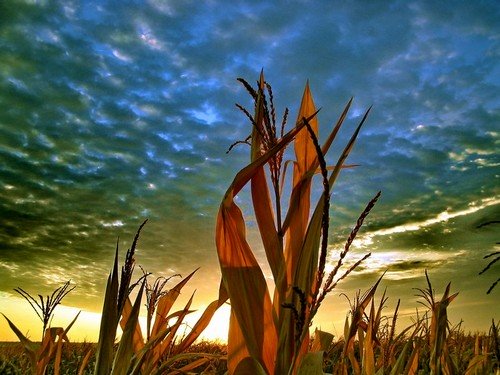
Crop protection is important for the farmer of this maize field

So you can see, that if you are a USA farmer, you are pretty well protected with various optional covers. If you are not from the USA then you will need to explore your options with your local insurance agent.
There are also 2 other policy covers for livestock that you may be covered under:
1) If you have a farm that is damaged by chemical overspray from a neighboring farm, or within a mile or so of your farm brought it from the wind, you can claim under your crop insurance policy, but you usually have to be able to name the culprit, with a residing address, before being awarded a pay out.
2) If you have good fences but despite this you have cattle that has strayed on to your property and destroyed a portion of your crop then you can make a claim.
However you will have to prove that your farm was well secure, had good fencing and all gates were closed when the incident took place.
Also if you had a single risk insurance policy just covering for hail or fire, for example, you will not be covered.
Farm House Insurance
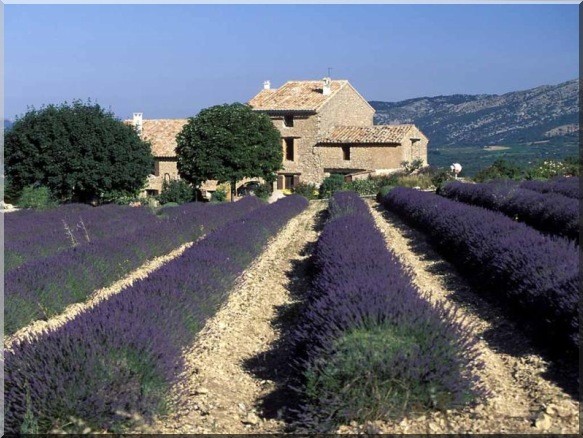
House Insurance is a basic policy for mitigating risk.
However, we have just
looked at coverage for crops and livestock, what about your homestead
or country home?
There are several options here:
There are several options here:
- 1) You can insure the structure of your homestead or country home, as well as your farm building and other structures
- 2) You can also protect your household contents, including appliances.
- 3) Protect against theft. This could cover livestock, crops or machinery
- 4) Protect against machinery breakdown
- 5) Protect against being sued by others who visit your farm. This is a particularly necessary policy cover if you have a lot of people coming on to your property and by taking out a business liability policy you are then covered if your visitors injure themselves in any way while visiting your farm or homestead, or have damage to their cars or other property.
If you are going to have
a household contents insurance for example, and you have items of
value, be it antiques, art work or even jewelry, make sure that you
itemize these individually so that they are given a replacement value
if damage or loss were to occur. Without doing this you may find out
the hard way like my father did.
For 25 years he religiously paid his household content's insurance premiums without ever making a claim. The following year my mother lost the diamond out of her wedding ring whilst vacuum cleaning.
Despite a long search, it was never found. My father put in a claim for the diamond which was promptly rejected by the insurance company as the ring had never been itemized. My father was totally insensed, and cancelled the policy the very next day, he was that upset. Which is a perfectly understandable reaction, except the following year they were burgled - but by now they were no longer covered!
Sad, but true! Which comes full circle when I mentioned earlier that you never think you need insurance until something unexpected happens!
For 25 years he religiously paid his household content's insurance premiums without ever making a claim. The following year my mother lost the diamond out of her wedding ring whilst vacuum cleaning.
Despite a long search, it was never found. My father put in a claim for the diamond which was promptly rejected by the insurance company as the ring had never been itemized. My father was totally insensed, and cancelled the policy the very next day, he was that upset. Which is a perfectly understandable reaction, except the following year they were burgled - but by now they were no longer covered!
Sad, but true! Which comes full circle when I mentioned earlier that you never think you need insurance until something unexpected happens!
Livestock Insurance and What isn't Covered
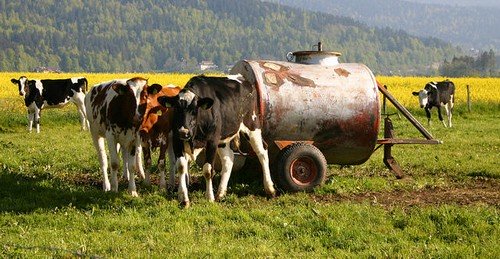
Farm
insurance and including Livestock
Farm insurance should give you total confidence that you are covered for the most unlikely events. But what is your policy not telling you?
These are just some things that your livestock insurance may not cover, such as:
- Genetic infertility
- Any surgical operations they may need, unless this is part of the policy
- Any hint that your loss of your livestock was as a direct result of your negligence
- You were responsible for the introduction of a contagious disease
- There are may diseases that may not be covered, even if you have heavy livestock losses:
- Anthrax
- Anaplasmosis
- Babesiosis
- Footrot
- Johne's Disease
- Pleuro Pneumonia
- Swine Fever
- Tuberculosis
- Blue tongue
- Rindepest
- Infectious Adenovirus
- Hepatitis
- Parvo Virus
- Distemper
- Caprine Arthritis
- Encephalitis
- Foot and Mouth
- Bovine Spongiform Encephalopathy (Mad Cow's Disease)
- Brucellosis
- Anaplasmosis
- Babesiosis
- Footrot
- Johne's Disease
- Pleuro Pneumonia
- Swine Fever
- Tuberculosis
- Blue tongue
- Rindepest
- Infectious Adenovirus
- Hepatitis
- Parvo Virus
- Distemper
- Caprine Arthritis
- Encephalitis
- Foot and Mouth
- Bovine Spongiform Encephalopathy (Mad Cow's Disease)
- Brucellosis
- You will also find that after a claim made for livestock loss a post mortem will have to be conducted first before any settlement has been made to rule out any of the above diseases or negligence.
- If your livestock were lost during a transportation accident or had to be put down for humane reasons, you are usually covered.
Conclusion to Farm Insurance:
Farm
insurance can be a wonderful fall-back that can give you peace of mind
knowing that in bad times, you will be covered, however you will only
have peace of mind if you are sure that all the risks that you may face
have been identified and you have decided which ones need to be covered.
Some final advice:
- Be wise when you take out your farm insurance policies, check the fine print - how many times have I said that now? But it is absolutely vital - there are many insurance companies who would steal the milk out of your grandmother's coffee if they knew that they could make a fast buck!
- Know exactly what you will be covered for, don't make assumptions and accept blindly that you are covered - ask the question for peace of mind.
- Don't just ask about what is covered in your farm insurance, it is equally important to ask what is not covered.
- Itemize things of value and make sure they appear in your policy.
- And if you are already covered with farm insurance, go through your policies and make sure that you have a water-tight policy.
Did you find this page helpful?
Sharing is a way of saying, "Thanks!"



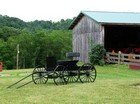
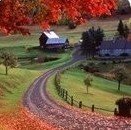
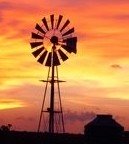
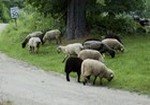

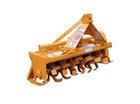
New! Comments
Do you have something of value to add? Leave me a comment in the box below.